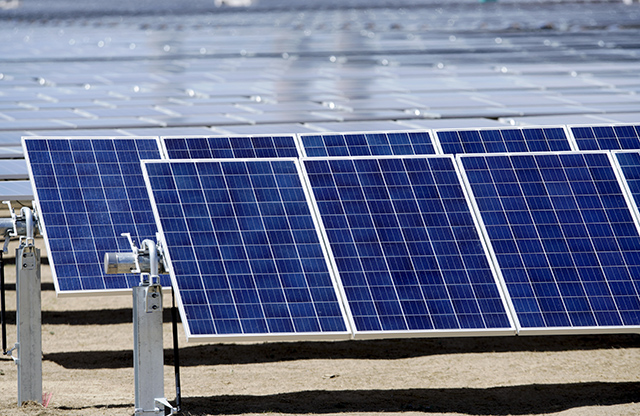
[image_credit]REUTERS/Rick Wilking[/image_credit][image_caption]You wouldn’t know from Xcel’s plan that Minnesota is a national leader in community solar – solar projects that allow multiple residents, renters, and businesses to share the sun-produced electricity.[/image_caption]
Xcel’s current plan isn’t making the grade. So what would an “A” grade resource plan look like?
Let’s start with what it wouldn’t include. It would not include Xcel’s proposed massive fossil gas plant that would emit over 3 million metric tons of carbon annually. It also wouldn’t include relicensing the Monticello nuclear plant without detailed plans for safe decommissioning and storage of waste, and protections for customers from a repeat of the utility’s 2014 cost overrun fiasco.
An “A” grade plan would also include a lot more solar. Estimates from federal experts suggest that Minnesota could draw nearly 40 percent of its electricity from rooftops alone. A recent study supported by the McKnight Foundation found that 13 gigawatts of solar – more than 10 times the current state capacity – would not only sharply reduce carbon emissions but would result in massive reductions in household electricity costs for everyone.
You also wouldn’t know from Xcel’s plan that Minnesota is a national leader in community solar – solar projects that allow multiple residents, renters, and businesses to share the sun-produced electricity. Each megawatt of community solar provides clean energy and electric bill savings for an average of 20 Minnesota customers and, according to an ILSR analysis, saves all customers money by producing energy close to where we use it. More than 100,000 Minnesotans could join the community solar revolution if half the McKnight study’s solar were built in these solar “gardens.” Instead of accelerating solar growth in Minnesota, Xcel has been lobbying state lawmakers to curtail community solar because it competes with profit-making ventures like gas plants.

[image_caption]John Farrell[/image_caption]
Cities could also partner with Minnesota’s vibrant network of independent solar installers to find job training and opportunities for folks typically left behind in clean energy jobs, including African-Americans and other communities of color. These financial and employment benefits would stack on top of massive health benefits because solar energy reduces demand for fossil gas plants that generate pollution as they burn gas, but also gas is shipped along pipelines or fracked from communities that are disproportionately Black and poor.

[image_caption]Patty O'Keefe[/image_caption]
As the improved plan accelerates clean energy, it should also consider the health and economic needs of the employees and communities left behind as we shutter the power plants of the polluting past. The plan would include support for workers in fossil fuel power plants, but also envision a partnership with state and federal authorities to build resilient economies in power plant host communities, including aid to supplant lost tax revenue.
Unfortunately, this visionary plan — one that supports low-income rural and urban communities, expands renewable energy resources, and builds a grid that is ready for the future — is not the plan that Xcel Energy put forward. In this climate crisis; in the wake of George Floyd’s death and the need to end a legacy of racism across the country, we can accept nothing less than a plan that seeks to heal both our planet and our communities.
Utilities and climate activists across the country see Xcel Energy as a leader. They may not realize how far we still have to go.
John Farrell is the co-director of the Institute for Local Self-Reliance in Minneapolis. Patty O’Keefe is the organizing representative at the Sierra Club North Star Chapter in St. Paul.
WANT TO ADD YOUR VOICE?
If you’re interested in joining the discussion, add your voice to the Comment section below — or consider writing a letter or a longer-form Community Voices commentary. (For more information about Community Voices, see our Submission Guidelines.)







And I thought power companies were the ones who provided us with power. Now they have to do it while solving income inequality and racism.